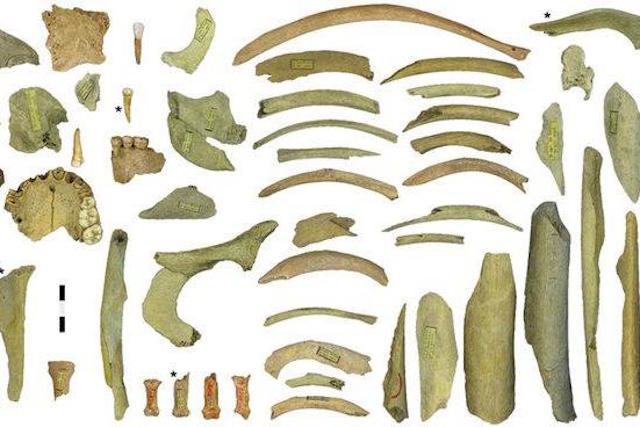
Unearthed from the Goyet caves near Namur, Belgium, the bones are the first evidence of Neanderthal cannibalism north of the Alps. The discovery was made possible by the largest haul of Neanderthal bones north of the Alps. Researchers with the University of Tübingen excavated 99 bones and bone fragments, dated between 40,500 to 45,500 years old.
Cuts, notches and marks offer evidence of the butchering process. Some bones showed signs of skinning, slicing and marrow extraction. "These indications allow us to assume that Neanderthals practiced cannibalism," Hervé Bocherens, a professor at Tübingen's Senckenberg Center for Human Evolution and Palaeoenvironment, said in a news release. "The many remains of horses and reindeer found in Goyet were processed the same way." In addition to revealing signs of butchering, the remains featured Neanderthal bones fashioned into tools.
DNA samples were collected from the remains and analyzed, doubling the amount of late Neanderthal genetic data. Their analysis shows late Neanderthals had limited genetic diversity and were increasingly interrelated as they approached extinction some 30,000 years ago. Such findings are in line with previous DNA studies.
No other groups of European Neanderthals in the region have revealed signs of cannibalism, and several excavated communities have revealed signs of burials. Other digs have yielded more sophisticated arsenals of stone tools. "The big differences in the behavior of these people on the one hand, and the close genetic relationship between late European Neandertals on the other, raise many questions about the social lives and exchange between various groups," concluded Bocherens.
The findings are detailed in a new paper, published this week in the journal Scientific Reports.



Comment: See also:
The Golden Age, Psychopathy and the Sixth Extinction